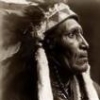-
Posts
1,222 -
Joined
-
Last visited
Reputation Activity
-
 jbshan got a reaction from Elijah in US Brig Niagara by mikiek - FINISHED - Model Shipways - Scale 1:64 - First wooden ship build
jbshan got a reaction from Elijah in US Brig Niagara by mikiek - FINISHED - Model Shipways - Scale 1:64 - First wooden ship build
If the hammocks stick up too far and get in the way, you could lay them on a slant.
-
 jbshan got a reaction from mtaylor in Deafness on a 74 gunner
jbshan got a reaction from mtaylor in Deafness on a 74 gunner
As you say, off the top of the head without doing any research, old muzzle loader about 1200 fps, no matter the caliber. Larger ball needs larger charge, but result in fps stays about the same.
-
 jbshan got a reaction from Elijah in Arrow by mikiek - FINISHED - Amati - 1:55 scale - American Gunboat
jbshan got a reaction from Elijah in Arrow by mikiek - FINISHED - Amati - 1:55 scale - American Gunboat
I try to keep in mind the atmospheric diminishing of contrast. If you stand back a couple of feet from the model, that's 30 yards back, real life, and the 1/8" seams won't be nearly as apparent, plus I think stark dark seams are distracting. I prefer them a bit more subtle, both in shade of darkness and in consistency. A lighter somewhat irregular look is more to my taste. I think there are one of two deck pics in my log page. Follow the link in my signature.
Having said all that, I'm nearly at the point where I'll find out how grey paper in the seams looks at 1/2" scale, on my Philadelphia model. Again, I went for less-than-black, but I fear it will get more prominent if I stain things as I probably should.
-
 jbshan got a reaction from Canute in The Battle of Lake Champlain: A “Brilliant and Extraordinary Victory”
jbshan got a reaction from Canute in The Battle of Lake Champlain: A “Brilliant and Extraordinary Victory”
This sounds like a volume every maritime history buff should consider.
There were two battles on Lake Champlain with many similarities, the one in 1814 described in this book, and the one in 1776. Both took place between an American squadron that was anchored in a bay that was protected by the terrain from an enemy arriving from all directions except the south, both took place in conditions with a north wind, which kept the enemy at the disadvantage. Both were attempts by the British to invade and were accompanied by large numbers of troops and both, being successful, forced the invasion to retreat back to Canada, in the earlier battle, until the next year, in 1814 until peace was settled later that year.
-
 jbshan got a reaction from mtaylor in CONSTITUTION c. 1812 by samueljr - scale 1:76.8 - cross-section
jbshan got a reaction from mtaylor in CONSTITUTION c. 1812 by samueljr - scale 1:76.8 - cross-section
I haven't done any of this, so use grain of salt, please.
Harder surface under copper when pouncing so less pronounced dimple.
Work from front, so it's an actual dimple, not a bump when applied to hull.
Burnishing with a tool shaped like the back of a spoon might give you the smoother look you are after.
I suspect a pinkish color because of the constant abrasion of traveling through the water, but dull, not shiny. Your pic of the copper after a dull coat is getting close.
When you get to that point, consider veneer stock for the ends. I finished a couple of sectional display mounts for ship's guns that way.
-
 jbshan got a reaction from mtaylor in The Battle of Lake Champlain: A “Brilliant and Extraordinary Victory”
jbshan got a reaction from mtaylor in The Battle of Lake Champlain: A “Brilliant and Extraordinary Victory”
This sounds like a volume every maritime history buff should consider.
There were two battles on Lake Champlain with many similarities, the one in 1814 described in this book, and the one in 1776. Both took place between an American squadron that was anchored in a bay that was protected by the terrain from an enemy arriving from all directions except the south, both took place in conditions with a north wind, which kept the enemy at the disadvantage. Both were attempts by the British to invade and were accompanied by large numbers of troops and both, being successful, forced the invasion to retreat back to Canada, in the earlier battle, until the next year, in 1814 until peace was settled later that year.
-
 jbshan got a reaction from skipper1947 in The Battle of Lake Champlain: A “Brilliant and Extraordinary Victory”
jbshan got a reaction from skipper1947 in The Battle of Lake Champlain: A “Brilliant and Extraordinary Victory”
This sounds like a volume every maritime history buff should consider.
There were two battles on Lake Champlain with many similarities, the one in 1814 described in this book, and the one in 1776. Both took place between an American squadron that was anchored in a bay that was protected by the terrain from an enemy arriving from all directions except the south, both took place in conditions with a north wind, which kept the enemy at the disadvantage. Both were attempts by the British to invade and were accompanied by large numbers of troops and both, being successful, forced the invasion to retreat back to Canada, in the earlier battle, until the next year, in 1814 until peace was settled later that year.
-
 jbshan got a reaction from thibaultron in Deafness on a 74 gunner
jbshan got a reaction from thibaultron in Deafness on a 74 gunner
As you say, off the top of the head without doing any research, old muzzle loader about 1200 fps, no matter the caliber. Larger ball needs larger charge, but result in fps stays about the same.
-
 jbshan got a reaction from Omega1234 in CONSTITUTION c. 1812 by samueljr - scale 1:76.8 - cross-section
jbshan got a reaction from Omega1234 in CONSTITUTION c. 1812 by samueljr - scale 1:76.8 - cross-section
I haven't done any of this, so use grain of salt, please.
Harder surface under copper when pouncing so less pronounced dimple.
Work from front, so it's an actual dimple, not a bump when applied to hull.
Burnishing with a tool shaped like the back of a spoon might give you the smoother look you are after.
I suspect a pinkish color because of the constant abrasion of traveling through the water, but dull, not shiny. Your pic of the copper after a dull coat is getting close.
When you get to that point, consider veneer stock for the ends. I finished a couple of sectional display mounts for ship's guns that way.
-
 jbshan got a reaction from jud in Deafness on a 74 gunner
jbshan got a reaction from jud in Deafness on a 74 gunner
As you say, off the top of the head without doing any research, old muzzle loader about 1200 fps, no matter the caliber. Larger ball needs larger charge, but result in fps stays about the same.
-
 jbshan got a reaction from mtaylor in Stockholm Tar
jbshan got a reaction from mtaylor in Stockholm Tar
Walnut ink is closer to the 'tar' color in those swatches. It lacks the redness shown in the burnt umber samples, but isn't quite as available. Perhaps, as suggested in one of the posts, a 'sepia' might get you there, but I don't know if you'll find it in an acrylic paint. I don't think you want to use watercolor or guache, an opaque water color.
-
 jbshan got a reaction from Piet in IJN Musashi by cog - Tamiya - 1:350 - PLASTIC - old tool
jbshan got a reaction from Piet in IJN Musashi by cog - Tamiya - 1:350 - PLASTIC - old tool
And it all gets covered up with gray paint. Almost seems a shame. The old line-of-battle ships, at least all that gleams might have actually been gold.
-
 jbshan got a reaction from mischief in Stockholm Tar
jbshan got a reaction from mischief in Stockholm Tar
As another source, Swix® the cross-country ski wax people make pine tar for wooden skiis. You smear it on, let dry for a while, then burn off the excess. Sound familiar?
Burnt Umber paint, I use artists' acrylics, is very close to the pine tar/walnut color we are looking for. It can of course be thinned a bit for lines that haven't yet gotten twenty coats of tar, that are merely dirty. You might also find walnut ink. Being artists' supplies, these should have longevity enough for the worst of the purists.
-
 jbshan got a reaction from lb0190 in Niagara by lb0190 - Model Shipways - 1/64
jbshan got a reaction from lb0190 in Niagara by lb0190 - Model Shipways - 1/64
Your build log at http://www.niagaramodel.com is one of the most thorough I have seen. I hope you will show your progress warts and all, as there are some tricky bits to this kit which are so much easier to explain with the kit in front of you. It (the log) should be a great help to anyone attempting this model. Unless one is a master builder with several others under the belt this kit will stretch the mind, and as you reach those tricky bits and solve them you will be doing a service to those following in your wake.
-
 jbshan got a reaction from Eric W in Deafness on a 74 gunner
jbshan got a reaction from Eric W in Deafness on a 74 gunner
For somebody on the lowest end of the economic scale, life aboard ship was not much worse than on shore. While not the nicest, the food was usually plentiful and on a regular time table, they had a place to sleep that wasn't under a bush in a field, they could be punished in what is to us a barbaric fashion ashore as well as afloat. In a British ship that was long at sea but close enough to a shore base to get regular provisions, considering that the crew was young men in the peak of physical condition, the death rate was less than the population ashore.
There are usually two sides to any story. Many of the horror tales were told in the 19th century as reformers were becoming active, after the war was won.
Now, as to deafness, probably. They could tie a scarf around their heads, but probably a long-serving gun crewman would not hear as well as somebody not exposed to that racket. They had to hear well enough to understand and carry out orders, after all.
-
 jbshan reacted to Dziadeczek in Need to improve square gun port cutouts
jbshan reacted to Dziadeczek in Need to improve square gun port cutouts
This is all fine what he is doing, but gun ports which are towards the stern and, to some degree the bow, are progressively les and less square, and become rhombs (parallelograms with other than right angles) because their vertical lines remain true vertical and the horizontal lines follow the decks.
Hence, his handy plastic square template cannot be used there, I'am afraid.
Unless he has different templates for those ports, each with different shapes...
-
 jbshan got a reaction from mikiek in Filler for Natural Wood?
jbshan got a reaction from mikiek in Filler for Natural Wood?
Test your concoction on a test panel before you rely on it. Staining over glued/filled surfaces and natural surfaces can give irregular results. If you're painting over, the glue-filled will work much better.
-
 jbshan got a reaction from DocBlake in Mast bands and rope wouldings
jbshan got a reaction from DocBlake in Mast bands and rope wouldings
They are certainly for reinforcing a 'made mast'; a ship with pole masts wouldn't necessarily need them. Where that change occurred would depend on the sizes of spars available and the capacity of the yard to do the work. A place with lots of tall straight spars possibly would use a pole mast to a larger size than one that had to import everything.
-
 jbshan got a reaction from Canute in Ships Pumps
jbshan got a reaction from Canute in Ships Pumps
Make a scale figure for checking purposes. The pump brake or handle wants to be at waist height or thereabouts.
-
 jbshan got a reaction from coxswain in Prince de Neufchatel by Heronguy - Model Shipways - Scale 1:64
jbshan got a reaction from coxswain in Prince de Neufchatel by Heronguy - Model Shipways - Scale 1:64
That why I put it there.
I'm not doing a traditional 'build log' since I have so many things going on (4 at last count), but I hope to be able to use it to post things that can help others over humps and bumps along the way.
One other hint, not in any way related to where you are at on your model. I've seen a lot recently on how to steam or soak or otherwise prepare plank for bending. Try saliva. It's a naturally occurring solvent that penetrates the wood fibers and allows them to bend more easily. I've used it on two models so far. Just don't use the technique on ebony, the wood made by the devil.
-
 jbshan got a reaction from Heronguy in Prince de Neufchatel by Heronguy - Model Shipways - Scale 1:64
jbshan got a reaction from Heronguy in Prince de Neufchatel by Heronguy - Model Shipways - Scale 1:64
That why I put it there.
I'm not doing a traditional 'build log' since I have so many things going on (4 at last count), but I hope to be able to use it to post things that can help others over humps and bumps along the way.
One other hint, not in any way related to where you are at on your model. I've seen a lot recently on how to steam or soak or otherwise prepare plank for bending. Try saliva. It's a naturally occurring solvent that penetrates the wood fibers and allows them to bend more easily. I've used it on two models so far. Just don't use the technique on ebony, the wood made by the devil.
-
 jbshan got a reaction from coxswain in Prince de Neufchatel by Heronguy - Model Shipways - Scale 1:64
jbshan got a reaction from coxswain in Prince de Neufchatel by Heronguy - Model Shipways - Scale 1:64
There you go! Nice shapes on that blocking.
Before you get there, I used the plywood bulwarks to mark out on the hull for port locations then threw the (put into the scraps box) plywood.
I inherited this model as the basic 'egg crate' with plans sheets so have had to mostly do it off the cuff. Note I have installed stiffener blocks, sheer piece, both for stability, blocking outlining the gun and oar ports, and blocking where the shrouds will be pinned. This will be in the thickness of the hull, covered both sides with the outer and inner planking. I also removed the plywood under deck and will use stripwood of the proper thickness for the deck. The bulkheads are close enough together not to need the sub deck, which is pretty thin in any event.
The knee of the head and cutwater was not well done, and the bow blocks were too small, so I redid the stem with several pieces (which don't show well here) and you can see the hawse pieces I added to pad out the bows of the hull. It seemed easier to use the correct forms to get to the final result rather than make up some other system myself.
Nirvana, you're pretty quick with the 'like'. Try it with the pic I intended to send with the text.
-
 jbshan got a reaction from popeye the sailor in Prince de Neufchatel by Heronguy - Model Shipways - Scale 1:64
jbshan got a reaction from popeye the sailor in Prince de Neufchatel by Heronguy - Model Shipways - Scale 1:64
There you go! Nice shapes on that blocking.
Before you get there, I used the plywood bulwarks to mark out on the hull for port locations then threw the (put into the scraps box) plywood.
I inherited this model as the basic 'egg crate' with plans sheets so have had to mostly do it off the cuff. Note I have installed stiffener blocks, sheer piece, both for stability, blocking outlining the gun and oar ports, and blocking where the shrouds will be pinned. This will be in the thickness of the hull, covered both sides with the outer and inner planking. I also removed the plywood under deck and will use stripwood of the proper thickness for the deck. The bulkheads are close enough together not to need the sub deck, which is pretty thin in any event.
The knee of the head and cutwater was not well done, and the bow blocks were too small, so I redid the stem with several pieces (which don't show well here) and you can see the hawse pieces I added to pad out the bows of the hull. It seemed easier to use the correct forms to get to the final result rather than make up some other system myself.
Nirvana, you're pretty quick with the 'like'. Try it with the pic I intended to send with the text.
-
 jbshan reacted to Chuck Seiler in HMS Atalanta 1775 by tlevine - FINISHED - 1:48 scale - from TFFM plans
jbshan reacted to Chuck Seiler in HMS Atalanta 1775 by tlevine - FINISHED - 1:48 scale - from TFFM plans
The ship would most certainly have a binnacle when underway. It's possible that the plans did not include it because; (a) ATALANTA had GPS or (b) it was not included because the binnacle was not built as part of the ship. It was a removable piece of 'furniture'. I suspect (b).
-
 jbshan reacted to mikiek in Filler for Natural Wood?
jbshan reacted to mikiek in Filler for Natural Wood?
Thinking outside the box for a sec. I think we all agree that trying to stain wood that has some filler (any type) on it could result in inconsistent coloration. So what if you stained first and then filled? That would mean the filler color would have to match the wood. What I just tried might only work on walnut but it might be a start. And walnut is a popular wood for planking.
I bought this product to try to dye white linen material for sails. It did a pretty good job but it has been sitting on a shelf since then.
On the left started out as Elmers 50/50 with water. Then pinch by pinch I added the crystals until the color of the mixture matched the wood. It didn't take much. I painted it on a plank. This is still wet.
This is dry.
I could have but did not add some walnut dust from sanding. That would have thickened up the mixture some and allowed it to fill a crack better. But it is a start. And like I said this would go on after the staining.
I'm going to stay with this effort. We'll see where it goes.















